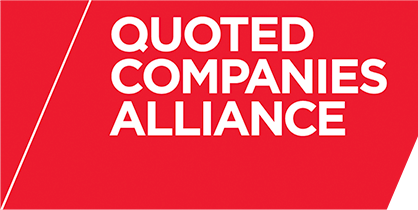Introduction
HMRC has changed its interpretation of the capital gains position for shares acquired before 10 April 2003 from the exercise of unapproved options and Enterprise Management Incentive ("EMI") options.
The main effect of the revised interpretation is to restrict the employee from having an artificial, additional uplift in his acquisition cost of the shares for capital gains tax purposes which was previously available and which could substantially reduce capital gains or produce valuable capital losses.
The interpretation is relevant for all optionholders who have not yet made use of the additional uplift in a tax return which cannot now be challenged by HMRC.
Background
When employees exercise options, the main focus is on the income tax liabilities on exercise. However, there is also capital gains tax
("CGT") to consider when they come to sell those shares, when an employee's gain or loss is worked out principally by reference to the difference between what he sells his shares for and his CGT "acquisition cost" or "base cost".
The revised interpretation concerns what that base cost should be for shares acquired from the exercise of unapproved or EMI options before 10 April 2003.
Old HMRC position for pre-10 April options
Following the case of Mansworth v Jelley in late 2002, HMRC issued somewhat unexpected guidance in early 2003 that, where an employee exercised unapproved options or EMI options, then when he came to sell those shares the effect of that case was that his base cost would be:
(a) the market value of the shares on the date he exercised his options; plus
(b) the amount on which he paid income tax.
In effect, the interpretation gave employees a double uplift. While welcome, this was a surprise interpretation as previously it was just thought that there was an uplift for the amount on which income tax had been paid. The revised interpretation led to credit being given for the same amount twice in many cases.
For example, assume that an employee exercised an unapproved option with an exercise price of £1 per share at a time when the shares were worth
£4 and he immediately sold the shares (as is normally the case with a large proportion of shares acquired through unapproved options due to the need to raise income tax and exercise monies).
HMRC's guidance from early 2003 on the pre-10 April 2003 position was that the employee would pay income tax on £3 per share, but his base cost for capital gains purposes would be £4 plus the £3 on which he had paid income tax, ie a total of £7. Since the employee sold the shares for £4 per share, although he would still have an income tax liability this would therefore be balanced by a capital loss of £3 (£4 – £7) when he sold the shares.
A capital loss is valuable because either it can be used to set off against other capital gains the employee has in that year or it can be rolled forward indefinitely and set off against other capital gains in the future.
The interpretation was also helpful if the employee kept the shares and they rose in value. For example, if he sold them when they were worth £9, then, because of the high base cost, he would only pay CGT on £2 (£9
– £7).
As this interpretation gave rise to a very favourable outcome, the Government quickly and understandably reversed this treatment for option exercises on or after 10 April 2003 through legislation in the Finance Act 2003. This limited the uplift to the amount on which income tax was payable. Importantly, however, they did not reverse the position retrospectively for options already exercised and so considerable capital gains planning opportunities remained (at least until the revised HMRC interpretation was issued) for shares from options which had already been exercised.
Revised HMRC position for post-10 April 2003 options
HMRC now says that it has received new legal advice that its interpretation for pre-10 April 2003 exercises was wrong.
Although the income tax is worked out in the same way as before, the revised interpretation for pre-10 April 2003 exercises has taken away the additional base cost uplift of the amount subject to income tax. The base cost would now just be the market value on the date on which the shares were acquired (ie £4 in the above example), with no extra credit for what has been subject to tax.
The same day sale described above would therefore have given rise to a no gain, no loss sale rather than a capital loss of £3. The future sale described in the above example would therefore now give rise to a gain of £5 (£9 – £4) not £2. Many will think this is a more logical position to have reached rather than an uplift of the same amount twice.
The position is therefore broadly the same for shares acquired pursuant to pre-10 April 2003 and post-10 April 2003 option exercises.
Going forward
As this issue is limited to shares acquired through exercises before 10 April 2003 (when the legislation was revised to make it clear that there was no double uplift) and tax returns already finalised will not be re-opened, this is still relevant in a number of cases. This is because the change is likely to have an adverse effect on CGT liabilities for employees who acquired shares from exercising unapproved or EMI options before 10 April 2003 and are:
- still holding those shares; or
- who have already sold those shares but the relevant tax returns have either not yet been made or remain susceptible to HMRC amendment or enquiry because HMRC will expect them to work out their tax liabilities using the new interpretation. Those who have already sold their shares and claimed a capital loss, but not yet used that capital loss, are protected and will still be able to use that loss provided the relevant return is not susceptible to HMRC amendment or enquiry.
Is HMRC right?
Many commentators were surprised at HMRC's interpretation in 2003, but saw no reason to challenge it as it was in taxpayers' favour.
While it is difficult to advise further with any certainty until HMRC provides more details on the legal advice that has precipitated the change in its interpretation (which we have asked to see), it is likely to revolve around the technical interaction between a general capital gains rule affecting employees acquiring shares and specific provisions on options which can be read in various ways. However, although we think that HMRC's analysis on this particular point may be debatable, the same result may be achieved in other ways. The double uplift was certainly never intended and was a bizarre result. Unfortunately therefore, there seems little prospect of successfully challenging HMRC on the merits of its new interpretation, although whether HMRC can retrospectively withdraw it may be another matter.
The relevant HMRC announcement can be read here.
This article originally appeared in Law-Now, CMS Cameron McKenna's Free Online Information Service. To register for Law-Now, simply visit www.law-now.com and select the 'Register' link in the main navigation.

